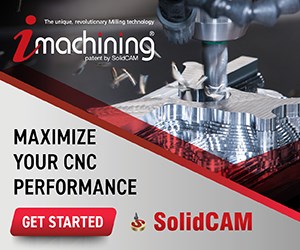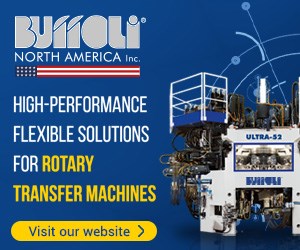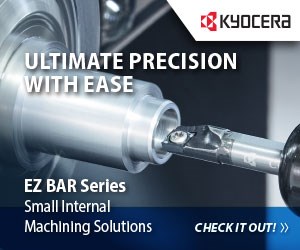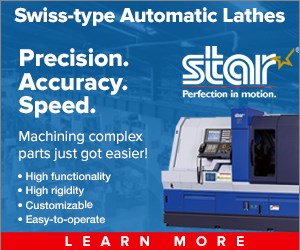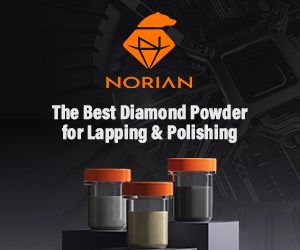SPECIAL PURPOSE EQUIPMENT
Narrow by Special Purpose Equipment Product Category
- Automatic Storage/Retrieval Systems
- Composite Forming Machines (Tape Laying, Filament Winding, etc.)
- Deburring Equipment
- Diecasting Machines
- Diecutting Machines
- Electro-Chemical Machines (ECM)
- End Finishing Equipment, Bar and Tube
- Foundry Equipment
- Heat Treating Equipment & Supplies, Including Ovens & Furnaces
- Insertion Equipment - Fastener
- Marking & Engraving
- Metal Disintegrators
- Miniature Machines for Training
- Plastic Assembly
- Plastic Cutting & Slitting
- Plastic Film Sealing
- Plastic Joining
- Plastic Molding & Forming
- Plastics Injection Molding Machines
- Plastic-Working Equipment
- Screen Printing Machines
- Spline Rolling Machines
- Straightening Machines
- Stress Relief Equipment
- Surface Treatment & Coating Equipment
- Vacuum Forming Machines
- Woodworking Equipment
FAQ: Special Purpose Equipment
What is a rotary transfer machine?
As the name implies, rotary transfer machines are based on a circular table that rotates either vertically or horizontally. A number of workpieces are clamped into positions on the table’s surface.
The number of parts loaded on a particular machine depends on the number of stations available to perform machining operations. Gosiger High Volume sells BTB CNC rotary transfer machines that, depending on the model, accommodate from four to 16 parts on a table.
If there are eight clamping positions on the table, the first position is used for loading and the other seven positions can each perform multiple operations on a part. As the table rotates incrementally, each part moves to another workstation where machining operations are performed on as many as three sides of the part.
The operations at each station happen simultaneously, which means that all seven parts on the table are being machined at the same time. Therefore, as many as 21 tools (parts in seven stations are each being machined on three sides) are working on these parts. The combination of automated part feeding and simultaneous machining operations is why a rotary transfer machine can produce an abundance of parts quickly.
For maximum efficiency, the various operations should be split across all available positions on the rotary table. The overall cycle time then is determined by how long it takes to complete the slowest operation. Thus, if the longest operation takes 10 seconds, that becomes the total cycle time.
The CNC “brains” of modern rotary transfer machines ensure that every movement is precisely controlled for consistency and accuracy, while making it easy to modify programs to accommodate changes in specifications or the addition of new members to a parts family.
(Source: Beyond One and Done)
Which bar feed system is best for production machining?
There are two generic types of bar feeders available—the hydrostatic type and the hydrodynamic type. Both offer distinct advantages for specific applications.
The selection depends entirely on the application; however, each type has performance factors that should be understood before a purchasing decision is made. Let’s look at a typical application, a single spindle Swiss-type CNC lathe, to establish a base for comparison.
The first consideration for selecting a bar feed system for this machine is part quantity. As a rule of thumb, if part runs are in the thousands, a full-length magazine-style hydrostatic bar feed system would be the best choice. This is because the hydrostatic magazine type bar feeder is essentially an automated system. If high volume part runs require unattended machine operation for efficiency, the hydrostatic type bar feeder will meet operational needs more closely than a hydrodynamic type system.
If production runs are in the hundreds of parts, a hydrodynamic bar feed system will work well. A hydrodynamic bar feed system can be considered part time automation. An operator can still effectively tend to multiple machines when part runs are in the hundreds. Even though hydrodynamic bar feeders require that single bars be manually loaded, throughput disruptions are minimal with low volume part runs.
This leads to another critical purchasing consideration—the length of the part being made and the cycle time necessary to make it. If the machining cycle time is fast and the part is long, a 12-foot bar doesn’t last more than 10 minutes or so in some machines. If this is the case, a hydrostatic type full length magazine bar feeder should be considered. Its ability to automatically load stock makes it the best choice for this application.
Where parts are small or are machined from a tough to cut material requiring a lengthy cycle time, it might take all day to consume one 12-foot bar. Generally, with that type of application, the operator is always present. The operator is always checking parts, probably every other part, so the need for full automation is not necessary and the hydrodynamic bar feed system would be the most cost effective choice.
There is a trend today to run higher and higher rpm, especially in single spindle Swiss-style machines. As rpm increase so does the instability of the bar. The closer the ID of the feed tube is to the diameter of the stock, the more stability the system affords and the higher the rpm can go. With a hydrodynamic bar feed system, the customer can economically select the optimum feed tube ID. Hydrodynamic bar feed system manufacturers such as Lexair build feed tubes in small incremental diameters, 1/8 inch in Lexair’s case, and can build specials to accommodate any bar stock diameter.
This flexibility is a key benefit of a hydrodynamic bar feed system. If a shop runs a lot of different diameter bars and produces small part quantities, the quick and simple changeover to the proper feed tube size makes the hydrodynamic bar feed system a good choice. Changeover can be completed in under a minute. Hydrostatic systems, because the guide channels have to be swapped to accommodate a different stock size, require a longer changeover, necessitating longer machine downtime.
Each type of bar feed system supports stock well, and if set up properly, there is no significant difference in the actual bar feeding performance of the two systems.
Make the purchasing decision based on how the system will be used. With that criterion in mind, you will pick the best bar feed system for your applications.
(Source: What Is The Best Bar Feed System For Production Turning?)
Get Listed!
Thousands of people visit this Supplier Guide every day to source equipment and materials. Get in front of them with a free company profile.


